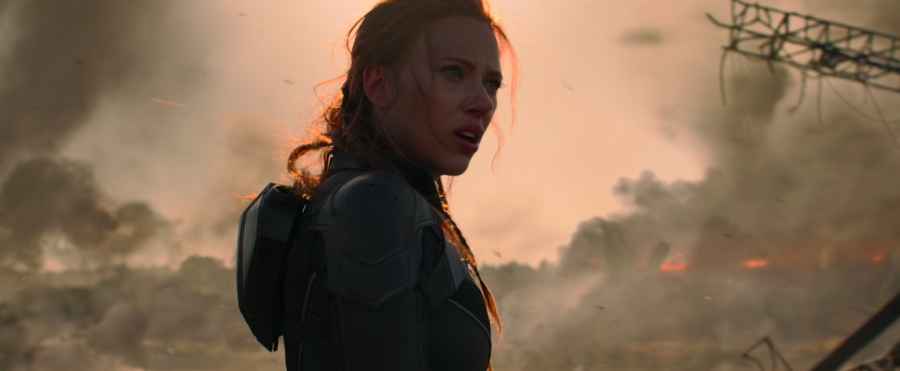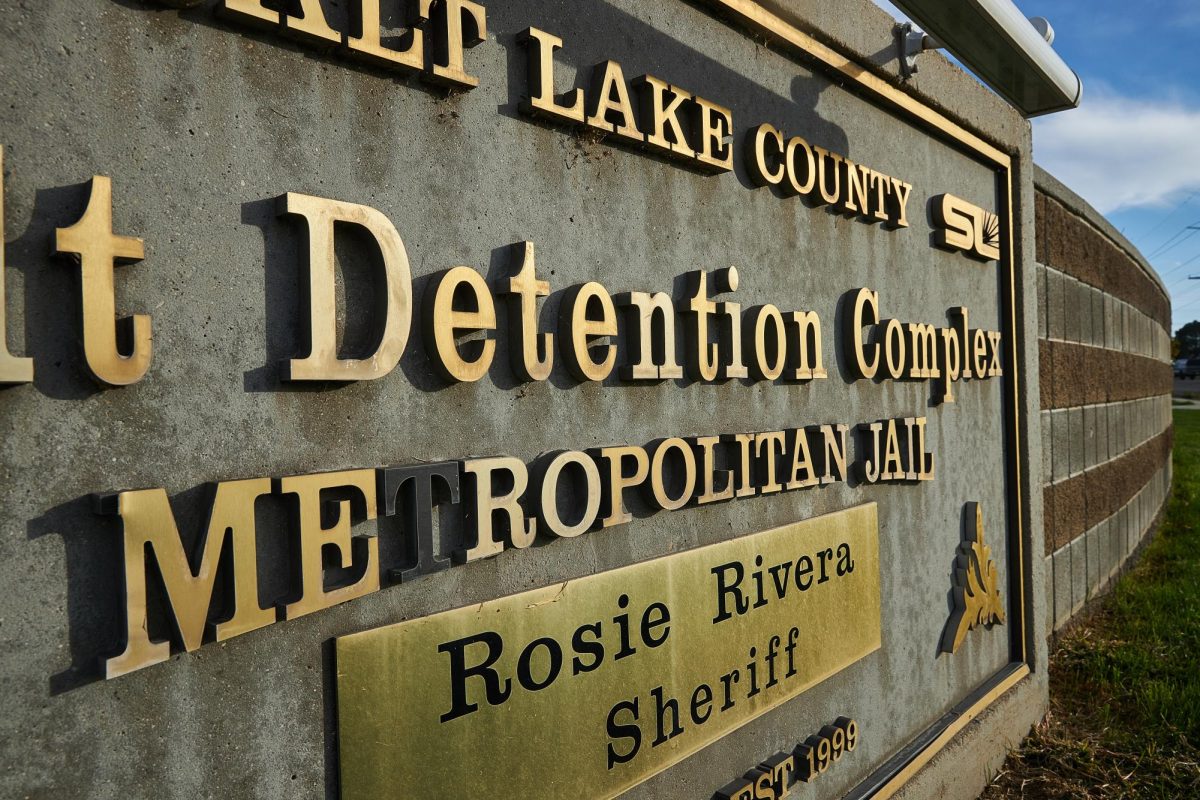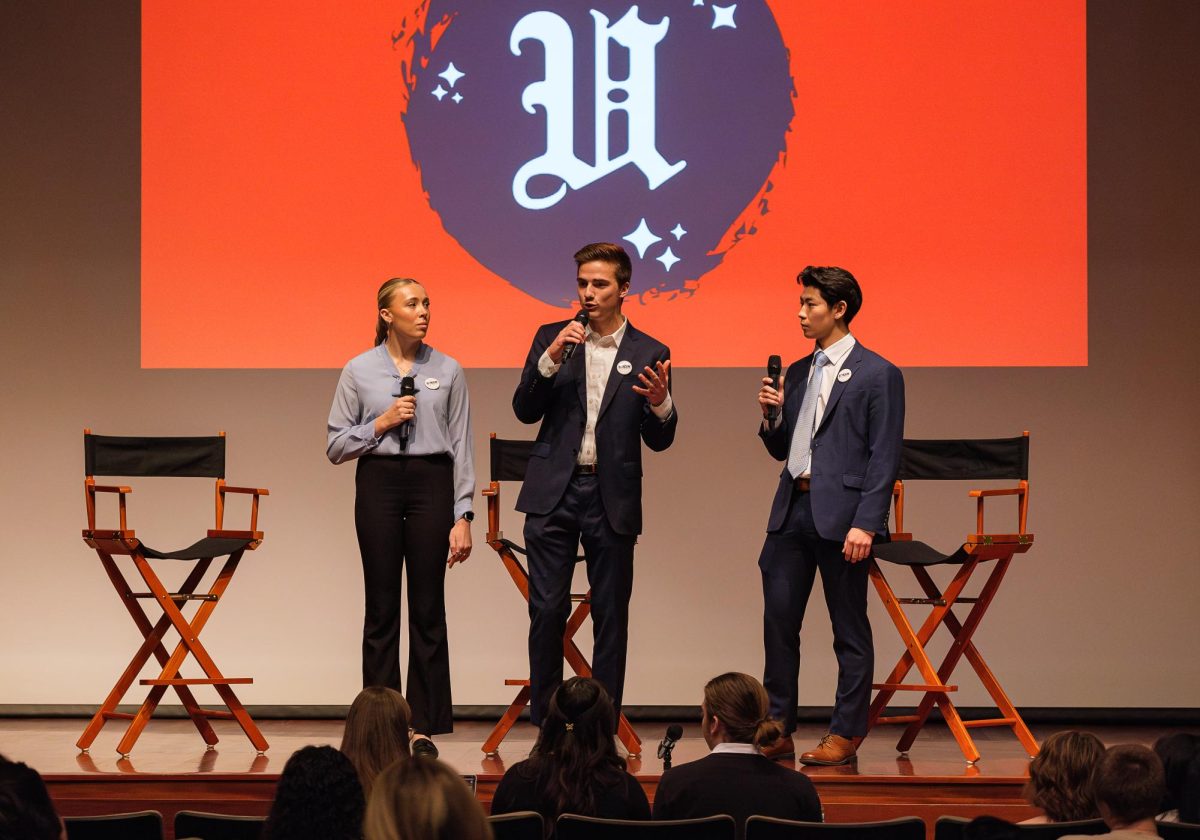‘Black Widow’ Reinforces the Importance of the Female Gaze in Film
Scarlett Johansson as Natasha Romanoff in the “Black Widow” trailer. (Courtesy Marvel Entertainment)
July 12, 2021
This article has spoilers for the Marvel Cinematic Universe and its movies.
Inspired by the Marvel comics, the movie “Black Widow” follows Natasha Romanoff (Scarlett Johansson) as she reunites with her sister Yelena (Florence Pugh) to take down The Red Room, an organization that kidnaps and brainwashes women to become soldiers to serve General Dreykov (Ray Winstone). Believing she had killed Dreykov years earlier, Romanoff is surprised by The Red Room’s operations and thrust into dire situations where she must face a history that audiences have yet to see.
The movie features intense fight sequences, impressive CGI and a heartfelt story about the reconciliation between sisters. The script was witty and showcased Pugh’s comedic chops while allowing Johansson to present a more whimsical side of Romanoff.
In the timeline of the Marvel Cinematic Universe, “Black Widow” takes place right after “Captain America: Civil War,” after the break-up of the Avengers. After Romanoff’s tragic death in “Avengers: Endgame,” the character’s storyline was seemingly wrapped up, however beautifully. “Black Widow” gave audience members the closure they were hoping for while opening up Yelena’s Avengers journey with endless opportunities.
The Importance of the Female Gaze
“Black Widow” displayed the importance of the female gaze in film, and it is especially important as a major release from Marvel Studios. Director Cate Shortland made history as the first solo female director of a Marvel movie, an achievement the franchise was overdue for.
Johansson has discussed her struggle to be taken seriously amongst the largely male directors and writers for the Marvel Universe. In a Vanity Fair interview, Johansson stated, “I’d have to wear pasties to green-light any of these movies,” showing her disdain for the several writers and directors.
When a character is objectified by its own creators, they become an unreliable caricature and lose the sense of humanity that captures audiences.
Despite being so well-loved by fans, I’d argue that past Marvel movies had yet to do this character justice. “Black Widow” was the perfect last hoorah for Romanoff and, with the film breaking pandemic records at the box office while raking in even more viewers with streaming through Disney+, it’s clear that having empowered female directors and actors only enhances a performance.
The Red Room and Romanoff’s History
The long-time viewers of Marvel knew of Romanoff’s haunting past from montages in “Avengers: Age of Ultron.” With mentions of abuse and forced sterilization, being dragged against her will to work for The Red Room as a child was a revelation consistent with the character’s lore.
As she attempts to take down The Red Room, Romanoff sees all of the faces of the girls Dreykov is planning to forcefully draft into his army. In a full-circle moment for our hero, she downloads all of the names of the girls onto a hard drive as The Red Room comes crumbling down to ensure their protection at the end of the movie.
These women taken from their mothers and forced into labor felt like an eerie nod to human trafficking. The connection came when one of the girls said, “I don’t wanna do this. He’s making me,” when she is able to momentarily break free from the mind control constructed by Dreykov.
According to H. E. A. T. Watch, there are 40.3 million human trafficking victims globally, and 1 in 4 victims of human trafficking are children. With a big blockbuster movie bringing this distressing reality to light through allegory, “Black Widow” may encourage viewers to better understand the circumstances of this pressing issue.
Watch “Black Widow” in theaters or on Disney+.








